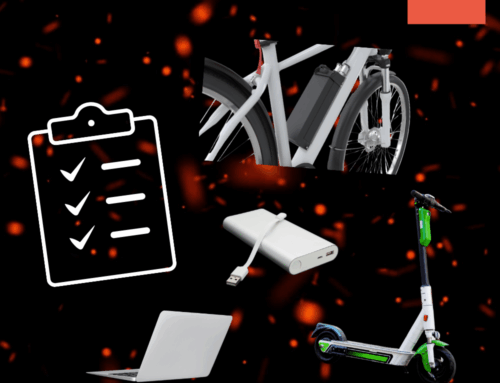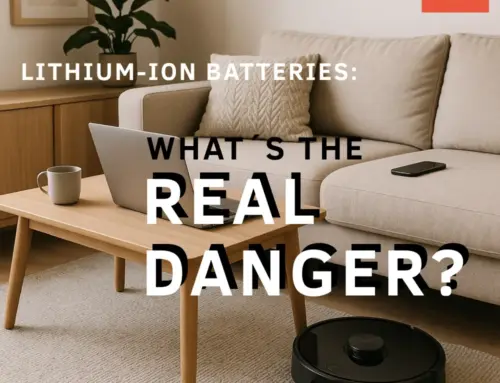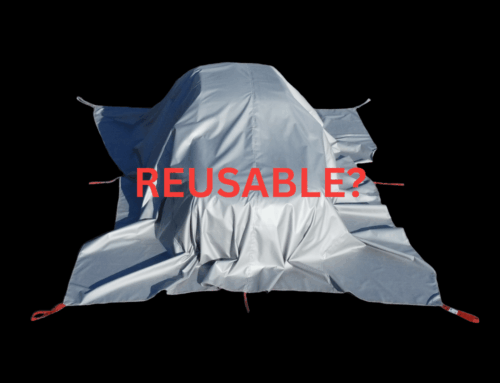
Mit den ersten warmen Tagen und längeren Sonnenstunden beginnt die ideale Zeit, das E-Bike aus dem Winterschlaf zu holen. Doch bevor die ersten Touren starten, sollte das Bike einem gründlichen Frühjahrs-Check unterzogen werden.
Warum ist das so wichtig? Nach mehreren Monaten Standzeit können sich Reifendruck, Bremsen, Akku und Antriebssystem verschlechtern. Ein gründlicher Check hilft, Sicherheitsrisiken zu minimieren und das E-Bike in Topform zu bringen.
In diesem Artikel erfahren Sie:
- Welche Wartungsarbeiten vor Saisonbeginn wichtig sind
- Wie Sie einen defekten Akku erkennen
- Warum die richtige Lagerung und das Laden des Akkus essenziell sind
Machen Sie Ihr E-Bike fit für die neue Saison und starten Sie sicher durch!
Inhaltsverzeichnis
1. Frühjahrs-Check für das E-Bike: Wichtige Punkte im Überblick
Bevor Sie die ersten Kilometer fahren, sollten wichtige Komponenten des E-Bikes überprüft werden.
Reifen & Luftdruck prüfen
Luft entweicht über die Wintermonate langsam aus den Reifen. Kontrollieren Sie deshalb den Luftdruck und füllen Sie ihn auf die vom Hersteller empfohlene bar-Angabe auf. Gleichzeitig sollten Sie auf Risse, poröse Stellen oder Beschädigungen im Gummi achten.
Bremsen testen & ggf. erneuern
Bremsen sind essenziell für die Sicherheit. Machen Sie einen Funktionstest und prüfen Sie, ob die Bremskraft nachgelassen hat. Falls nötig, sollten die Bremsbeläge gewechselt oder nachjustiert werden.
Kette & Schaltung warten
Überprüfen Sie die Kette, Schaltung und Ritzel. Falls die Kette trocken oder rostig ist, sollte sie geölt werden. Eine schlecht geölte Kette führt zu höherem Verschleiß und ineffizientem Fahren.
Beleuchtung & Elektronik überprüfen
Da E-Bikes elektrische Komponenten besitzen, sollten alle Systeme auf Funktionalität geprüft werden:
- Funktioniert das Display?
- Läuft der Motor störungsfrei?
- Sind alle Kabelverbindungen intakt?
- Arbeiten Front- und Rücklichter einwandfrei?
Falls Probleme auftreten, ist eine Überprüfung in einer Fachwerkstatt ratsam.
Akku prüfen – das Herzstück des E-Bikes
Der Akku ist eine der teuersten und wichtigsten Komponenten des E-Bikes. Deshalb verdient er besondere Aufmerksamkeit.
2. Wie erkennt man einen defekten E-Bike-Akku?
Ein beschädigter oder alter Akku kann nicht nur die Reichweite reduzieren, sondern auch ein Sicherheitsrisiko darstellen. Achten Sie auf folgende Warnsignale:
- Geringere Reichweite: Wenn der Akku deutlich schneller leer ist als gewohnt, kann dies auf Zellverschleiß hindeuten.
- Aufblähung oder Risse: Ein sichtbarer Schaden am Gehäuse ist ein Warnsignal. Der Akku sollte in diesem Fall nicht weiter genutzt werden.
- Unregelmäßiges Laden oder plötzliche Abschaltung: Dies kann auf einen Defekt in der Elektronik oder eine beschädigte Zelle hinweisen.
- Übermäßige Hitzeentwicklung: Der Akku sollte weder beim Laden noch beim Fahren extrem heiß werden.
Falls einer dieser Punkte zutrifft, sollte der Akku nicht mehr genutzt und von einer Fachwerkstatt geprüft werden.
3. Kann man E-Bike-Akkus testen lassen?
Ja, viele Fahrradwerkstätten bieten spezielle Akku-Checks an. Dabei wird geprüft:
- Wie hoch die Restkapazität ist (nach mehreren Ladezyklen kann diese abnehmen).
- Ob alle Zellen gleichmäßig arbeiten oder eine defekt ist.
- Ob die Akkuelektronik einwandfrei funktioniert.
Tipp: Ein Akku-Test gibt Ihnen Sicherheit und kann potenzielle Schäden frühzeitig erkennen, bevor der Akku komplett ausfällt.
4. Sicherheitstipps zum Laden & Lagern von E-Bike-Akkus
Da Lithium-Ionen-Akkus empfindlich sind, sollten sie sorgfältig geladen und gelagert werden:
So laden Sie Ihren Akku sicher:
- Original-Ladegerät verwenden: Billige Ladegeräte können Überladung und Brände verursachen.
- Auf hitzebeständige Unterlagen stellen: Niemals auf Teppichen oder Polstermöbeln laden.
- Nicht unbeaufsichtigt laden: Besonders über Nacht sollte das Laden vermieden werden.
- Temperaturen beachten: Ideal sind 10–25°C, direkte Sonneneinstrahlung oder Frost vermeiden.
Richtige Lagerung für eine längere Lebensdauer:
- Ladestand zwischen 30–60 % halten, wenn das E-Bike längere Zeit nicht genutzt wird.
- Kühle, trockene Umgebung wählen (nicht in feuchten Kellern oder heißen Dachböden).
- Akkus nicht lose lagern: Eine spezielle E-Bike Akkutasche oder eine Brandbegrenzungsdecke sorgt für zusätzlichen Schutz.
Tipp: Eine Löschdecke für E-Bikes kann das Brandrisiko minimieren, falls ein Akku defekt ist oder überhitzt.
5. Fazit: Sicher und gut vorbereitet in die E-Bike-Saison starten
Ein gründlicher Frühjahrs-Check sorgt dafür, dass Ihr E-Bike sicher und einsatzbereit ist. Besonders der Akku verdient besondere Aufmerksamkeit, da er nicht nur für die Reichweite, sondern auch für die Sicherheit eine entscheidende Rolle spielt.
Die wichtigsten Maßnahmen im Überblick:
- E-Bike-Komponenten checken: Reifen, Bremsen, Kette, Beleuchtung und Elektronik testen.
- Akku prüfen und ggf. testen lassen: Bei Warnsignalen sofort handeln.
- Sicheres Laden & Lagern beachten: Akku vor Hitze und Feuchtigkeit schützen.
- Brandbegrenzungsdecke nutzen: Schutz für Akku-Lagerung & Ladevorgang.
Mit diesen Sicherheitsmaßnahmen steht einer sorgenfreien E-Bike-Saison nichts mehr im Weg!
Haben Sie Fragen oder eigene Erfahrungen zum E-Bike Check? Schreiben Sie uns in die Kommentare









